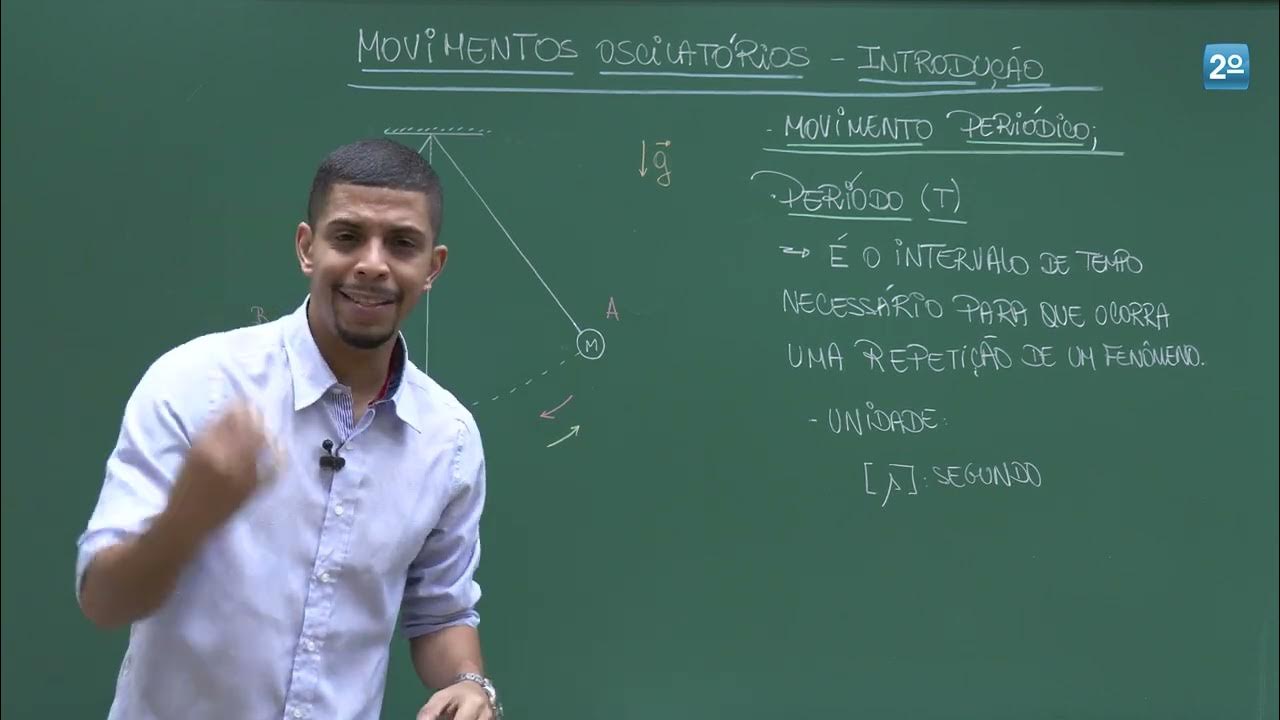How to answer Oscillations Questions in A Level Phyics (Simple Harmonic Motion, Resonance)
Summary
TLDRThis video tutorial focuses on tackling oscillation and simple harmonic motion questions for A-level physics exams. The instructor guides viewers through past exam questions, emphasizing the importance of understanding key equations and interpreting graphs. The video covers topics like pendulum oscillations, deriving angular frequency, and resonance, providing step-by-step explanations to solve problems efficiently. It also highlights the significance of memorizing fundamental formulas and offers tips for excelling in exam questions related to oscillations.
Takeaways
- 📚 The video focuses on answering oscillation and simple harmonic motion questions for A-level physics, aiming to simplify the complex topic by working through past exam questions.
- 🔍 The presenter uses a 2022 meijing paper to illustrate a typical simple harmonic motion question involving a pendulum, emphasizing the importance of understanding the relationship between acceleration and displacement.
- 📉 The video explains how a graph with a negative gradient indicates that the acceleration is in the opposite direction to the displacement, a key characteristic of simple harmonic motion.
- 🔢 The formula for acceleration in simple harmonic motion, a = -ω²x, is derived and used to calculate the angular frequency (ω) from the graph's gradient.
- 🔄 The video discusses how the angular frequency (ω) relates to the length of a pendulum and demonstrates how to calculate a constant (K) using the previously determined angular frequency.
- 🌀 The concept of resonance is introduced, explaining that it occurs when an object's driving frequency matches its natural frequency, leading to increased amplitude.
- 📈 The script guides viewers on how to calculate the period of oscillation using the angular frequency and provides a method to label axes correctly with time and displacement scales.
- 🕒 The video demonstrates calculating phase difference by comparing the time at which each pendulum crosses the equilibrium position, emphasizing the importance of understanding periodicity.
- 📝 The presenter advises memorizing key equations and concepts to efficiently answer questions, such as those involving resonance and simple harmonic motion.
- 🎓 The video concludes by encouraging practice and memorization of key formulas and concepts for success in answering A-level physics questions on oscillations.
Q & A
What is the main topic discussed in the video?
-The video discusses how to answer questions on oscillation and simple harmonic motion in A-level physics, focusing on understanding and applying various equations and formulas related to these concepts.
Why is simple harmonic motion considered a daunting topic for students?
-Simple harmonic motion is considered daunting because it involves many equations and formulas, and there is a substantial amount of content in the chapter that can be overwhelming to learn and apply.
What is the significance of the negative gradient in the graph shown in the video?
-The negative gradient in the graph indicates that the acceleration is in the opposite direction to the displacement, which is a key characteristic of simple harmonic motion.
How does the video suggest determining the angular frequency of an oscillation?
-The video suggests using the given formula a = -Omega^2 * x and the information from the graph to determine the angular frequency (Omega) of an oscillation.
What is the relationship between angular frequency and the length of a pendulum as explained in the video?
-The video explains that the angular frequency (Omega) is related to the length (L) of the pendulum by a constant (K), and this relationship can be used to determine the value of K using the previously calculated angular frequency.
How does the video explain the concept of resonance?
-Resonance is explained as the phenomenon where an object reaches its maximum amplitude when the driving frequency equals the natural frequency of the object.
What is the importance of understanding the units of angular frequency as discussed in the video?
-Understanding that angular frequency is a ratio and does not have units (it is dimensionless) is important for correctly interpreting and calculating the values in problems involving simple harmonic motion.
How does the video suggest calculating the period of oscillation given a displacement-time graph?
-The video suggests using the formula for displacement in simple harmonic motion, x = x_0 * sin(Omega * t), to find the angular frequency (Omega) and then calculate the period (T) as T = 2 * pi / Omega.
What is the qualitative effect on the amplitude of oscillations when the length of the string in a pendulum is increased, as discussed in the video?
-When the length of the string in a pendulum is increased while maintaining the same total energy, the amplitude of oscillations increases because the angular frequency decreases, requiring a larger displacement to maintain the same energy.
How does the video approach the calculation of phase difference between two oscillating pendulums?
-The video approaches the calculation of phase difference by determining the time difference at which the pendulums cross the equilibrium position and then converting this time difference into a phase angle in radians.
Outlines

This section is available to paid users only. Please upgrade to access this part.
Upgrade NowMindmap

This section is available to paid users only. Please upgrade to access this part.
Upgrade NowKeywords

This section is available to paid users only. Please upgrade to access this part.
Upgrade NowHighlights

This section is available to paid users only. Please upgrade to access this part.
Upgrade NowTranscripts

This section is available to paid users only. Please upgrade to access this part.
Upgrade NowBrowse More Related Video

Simple Harmonic Motion & Damped Motion | lect.-01 | Classical Mechanics #physics #bsc

Simple Harmonic Motion Introduction(SHM) via a Horizontal Mass-Spring System

Intuition about simple harmonic oscillators | Physics | Khan Academy

Two particles of masses m_1 and m_2 are tied to the ends of an elastic string of natural length a..

M H S aula 03

Aula 1 – Movimentos Periódicos e Introdução ao MHS
5.0 / 5 (0 votes)